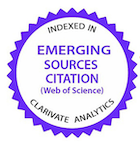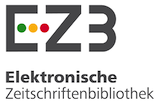Primary fibroblast cell cycle synchronization and effects on handmade cloned (HMC) bovine embryos
DOI:
https://doi.org/10.1590/1809-6891v19e-48555Abstract
Spatial and temporal synchrony and compatibility between the receptor oocyte and the donor cell nucleus are necessary for the process of embryo cloning to allow nuclear reprogramming and early embryonic development. The objective of the present study was to evaluate three cell cycle synchronization methods on a primary bovine fibroblast culture for 24, 48, or 72 h. These fibroblasts were used as nuclear donors to evaluate their in vitro developmental potential and the quality of the embryos produced through handmade cloning (HMC). No differences were found between the methods used for fibroblast synchronization in G0/G1 (p > 0.05). Production of clones from fibroblasts in four groups- no treatment at 0 h and using serum restriction SR, high culture confluence HCC, and SR+HCC at 24 h- resulted in high cleavage rates that were not different. Embryo production rates were 37.9%, 29.5%, and 30.9% in the 0h, SR24h, and SR+HHC24h groups, respectively, and 19.3% in the HCC group, which was significantly different from the other three (p < 0.05). There were no differences in the quality parameter among the clones produced with fibroblasts subjected to the different synchronization. Finally, when overall clone production was compared versus parthenotes and IVF embryos, the only difference was between clones and parthenogenetic embryos with zona pellucida (30.2% vs 38.6%). The number of blastomeres from the blastocytes produced through IVF was significantly greater than those from embryos activated parthenogenetically and from clones (117, 80, 75.9, and 67.1, respectively). The evaluation of three synchronization methods at different time points did not demonstrate an increase in the percentage of fibroblasts in the G0/G1 phases of the cell cycle; however, good quality and high cloning rates were obtained, suggesting that it is not always necessary to subject the cells to any synchronization treatments, as they would yield equally good cloning results.
Downloads
Published
How to Cite
Issue
Section
License
Copyright (c) 2018 CIÊNCIA ANIMAL BRASILEIRA (Brazilian Animal Science)

This work is licensed under a Creative Commons Attribution 4.0 International License.
Authors who publish with this journal agree to the following terms:
- Authors retain copyright and grant the journal right of first publication with the work simultaneously licensed under a Creative Commons Attribution License that allows others to share the work with an acknowledgement of the work's authorship and initial publication in this journal.
- Authors are able to enter into separate, additional contractual arrangements for the non-exclusive distribution of the journal's published version of the work (e.g., post it to an institutional repository or publish it in a book), with an acknowledgement of its initial publication in this journal.
- Authors are permitted and encouraged to post their work online (e.g. in institutional repositories or on their website) prior to and during the submission process, as it can lead to productive exchanges, as well as earlier and greater citation of published work (See The Effect of Open Access).































